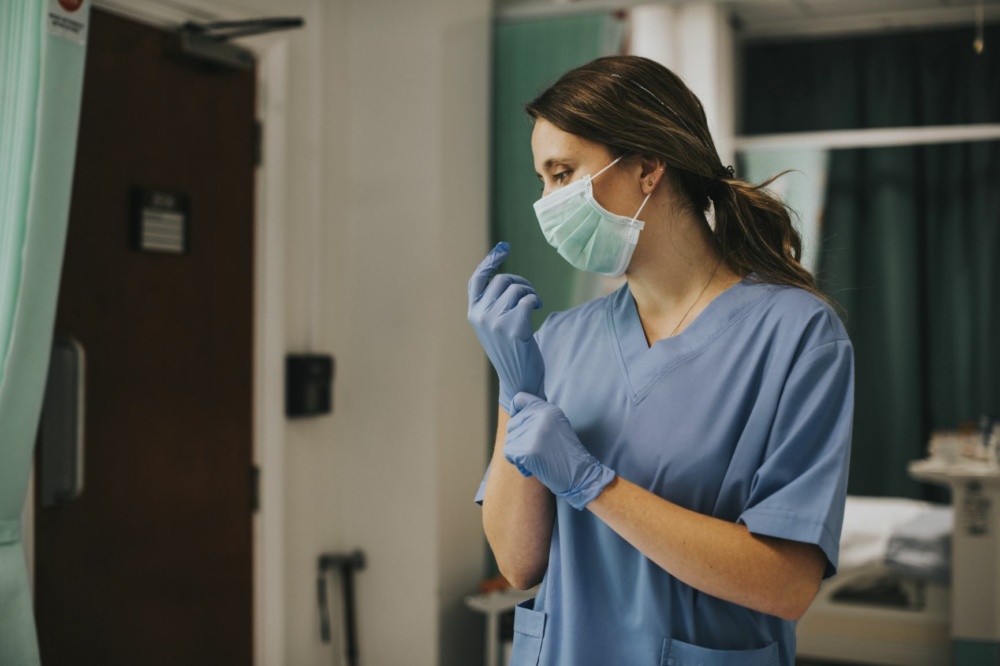Are You Tired of Wearing Readers? How Raindrop with LASIK Changed One Woman’s Life
When Dara Craft’s reading vision began declining in her mid-forties, the change came on fast and furious. “It hit me very quickly and really affected my daily activities, which was so frustrating. My computer screen was blurry, and I had trouble seeing my phone and reading labels at the grocery store. My husband and I even fought over my readers at restaurants, because menus were so hard for us to read,” Craft says.
Craft, who is from Plano, Texas, isn’t alone when it comes to reading vision problems. Most people ages 40 and older will eventually struggle to read without the aid of reading glasses, bifocals or contact lenses.
Raindrop Near Vision Inlay to the rescue
In 2016, the FDA approved a tiny implantable device that improves near vision by changing the shape of the cornea. Key-Whitman Eye Center’s President and Chief Surgeon Jeffrey Whitman played a key role in the clinical trials for Raindrop and is excited about how satisfied patients have been with the procedure.
As Dr. Whitman explains, “Following any Raindrop procedure, our patient outcomes are recorded in a registry. Since Raindrop was approved, the registry data has shown how outstanding the results have been. Nearly 95 percent of my patients rarely or never have to wear reading glasses, and 80 percent of patients are seeing 20/30 or better up close. That’s pretty impressive reading vision.”
‘You can reduce my need for readers? Tell me more!’
Prior to becoming dependent on readers, Craft always enjoyed excellent vision and never wore glasses or contacts, except for a brief time during pregnancy. She first heard about the Raindrop procedure after calling in to speak with Key-Whitman’s Marketing Director about advertising in a local publication she represented.
“While I was on hold, I heard an ad for Raindrop, and I instantly wanted to learn more. When the customer service rep picked up, she explained what was involved. I loved the idea of having a quick, painless procedure that would reduce my need for readers, so I scheduled a consultation right away,” Craft says.
LASIK and Raindrop together can optimize vision treatment outcomes
Crafts’s eye exam results revealed she could also benefit from distance vision treatment. Fortunately, this is something that Dr. Whitman could easily address with a LASIK procedure.
According to Dr. Whitman, “We only implant Raindrop in one eye, so we want to make sure the other eye – the dominant eye – has the best distance vision possible. If the dominant eye isn’t perfect, we can perform LASIK to typically give them close to perfect distance vision. By combining Raindrop and LASIK, an off-label procedure, we can achieve that sweet spot for vision treatment, which is why patients have been so happy with the results.”
This is not a monovision procedure (where one eye only sees distance and one eye only sees near). The patient’s distance vision may drop down a little bit in the Raindrop eye but not much. “That’s why we recommend LASIK for the dominant eye if any distance vision treatment is needed there, so the patient ends up with the best distance vision possible for driving and other activities,” Dr. Whitman says.
‘It was just so easy!’
Craft was pleased with the process, the experience and the results of her Raindrop procedure. “Dr. Whitman really put me at ease. He explained what would happen during the procedure, that it wouldn’t take long, there would be no pain and it wouldn’t be scary. For me, it was so quick and easy. I wish I had it done sooner.”
Depending on the patient, the off-label LASIK-Raindrop combination procedure takes about 15 minutes on average to perform. Within minutes after the procedure, the patient can begin reading right away, with normal focusing distance vision occurring over the ensuing days, though it may take a number of days for the focus point to settle.
“As with typical all-laser LASIK surgeries, the procedure is pretty straightforward and painless. If we need to treat distance vision with LASIK, we create the laser flap and perform LASIK first. For Raindrop, we also create a laser flap, place the inlay over the pupil and put the flap back in place. The flap seals back down a minute later,” explains Dr. Whitman.
Craft was also surprised at how quickly her eyes adjusted to near vision treatment near vision in one eye only. “I’ve heard some people say they didn’t like monovision contacts lenses, so that was one concern I had with Raindrop and LASIK. Since this is not a monovision procedure, my eyes adjusted quickly. Your eyes really learn to work together, plus I have great distance vision in both.”
Convenience, confidence and better vision – near, middle and far
Along with helping with reading vision, the Raindrop Near Vision Inlay with LASIK improves intermediate – or computer – vision, too. For Craft, this means no more blurry computer screens or dizzying trips to the grocery store. In addition, Raindrop gave her more confidence personally and in her sales career.
“Before Raindrop, wearing readers had become such a big part of my life. It wasn’t fun and made me feel old way too soon,” she says. “Following the procedure, life is so much easier. On the job, it’s so nice to grab a copy of my sales collateral to show a prospect and not have to dig for reading glasses.”
Today, Craft rarely needs readers, only reaching for them on occasions when she needs to read very fine print. She also isn’t struggling to read menus anymore, though her husband still is. “He wants to have the Raindrop procedure done, too,” she says.
Are your patients candidates for the Raindrop procedure to treat presbyopia?
People with healthy eyes, who are 40 years of age and older and dependent on readers, bifocals or contacts for up close vision, may be good candidates for Raindrop – but only an eye doctor can tell for sure. As with any eye surgery, patients must go through a comprehensive eye exam first.
As Dr. Whitman explains, “During the eye exam, we evaluate the health of the eye from front to back. The eye doctor checks for issues like glaucoma, retina problems, cataracts and other eye health conditions that would interfere with the outcome of the procedure. If we find anything, we want to take care of those issues first, before considering any treatments, such as Raindrop. If the patient isn’t a good fit for Raindrop, we’ll find the best procedure for them to improve their vision.”
Dr. Whitman has also successfully performed the off-label LASIK and Raindrop procedure on people who have had previous cataract surgery. “Following cataract surgery, many people still need to wear reading glasses. For those cataract patients who are tired of having to wear and keep track of readers, Raindrop may be a good option,” Dr. Whitman says.
About the Doctor:
Jeffrey Whitman, M.D., is a nationally renowned eye surgeon, board certified by the American Board of Ophthalmology. He has been the President and Chief Surgeon of Key-Whitman Eye Centers in Dallas since 1996 and is currently President of the Outpatient Ophthalmic Surgery Society. Dr. Whitman is a frequent participant in clinical trials and is known as a respected researcher, innovator and leader in refractive cataract surgery, LASIK eye surgery and for his extensive experience implanting high-technology lenses. He is frequently called upon to serve on the boards of local and national medical associations and organizations. Dr. Whitman and his wife reside in Dallas and enjoy fitness, playing tennis, snow skiing and traveling.
About the Author:
Mary Maloney is a freelance writer and marketing consultant based in Dallas, Texas. She specializes in writing strategic marketing content that drives revenue for clients in the legal, financial, healthcare, wellness, manufacturing, event marketing, retail and M&A spaces. Contact Mary on Twitter: @MKoskiMaloney or LinkedIn: https://www.linkedin.com/in/marykoskimaloney727/







Recent Comments